
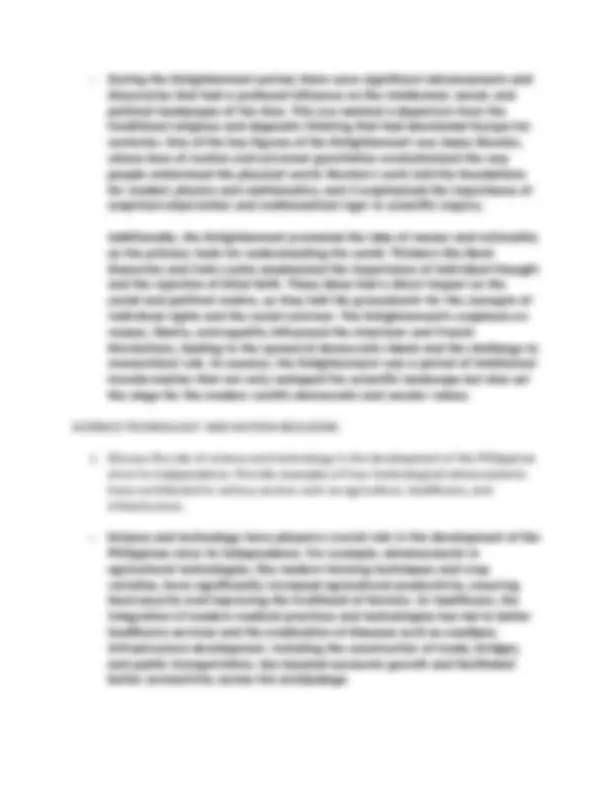
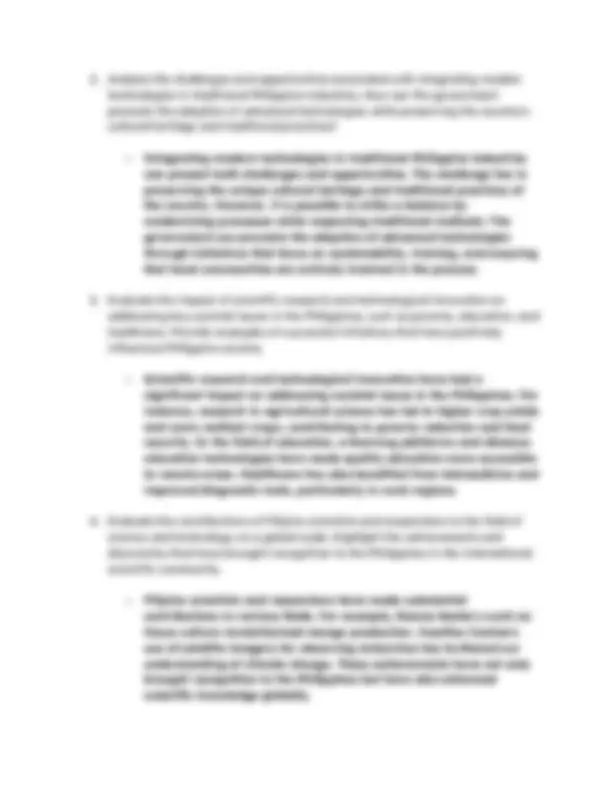
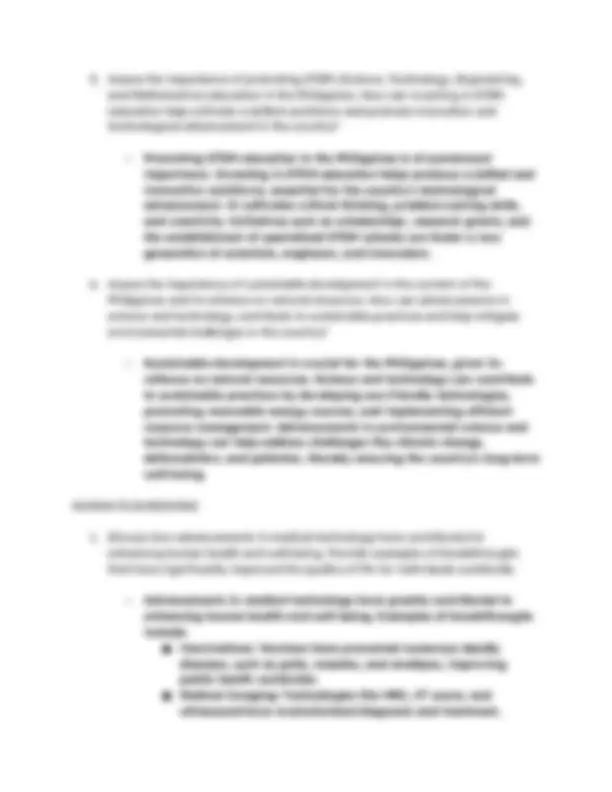
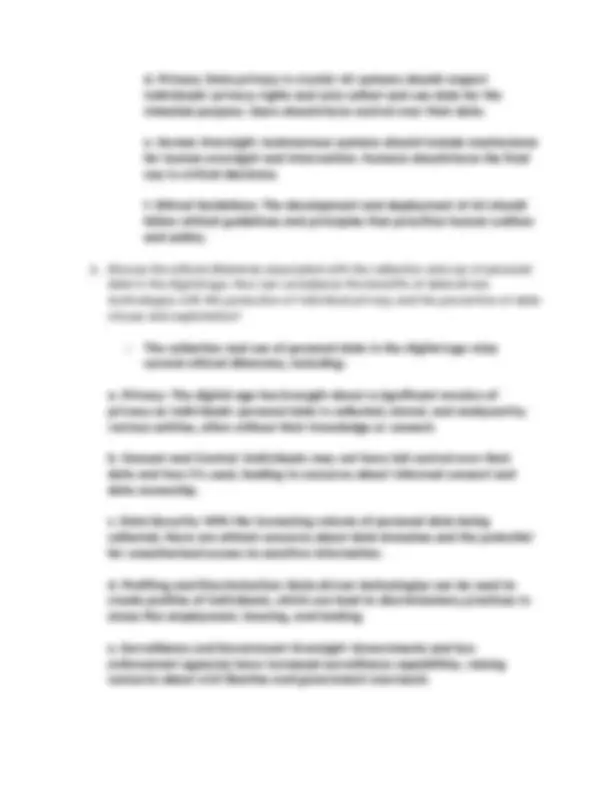
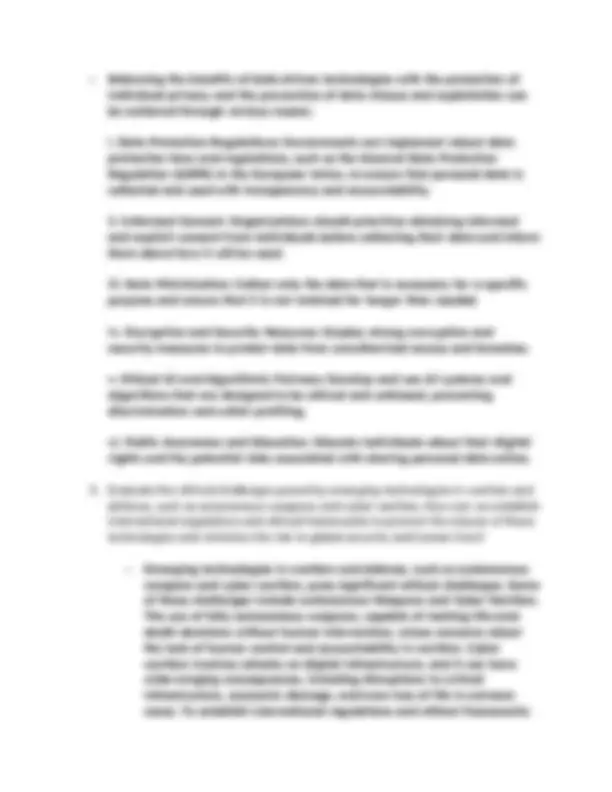
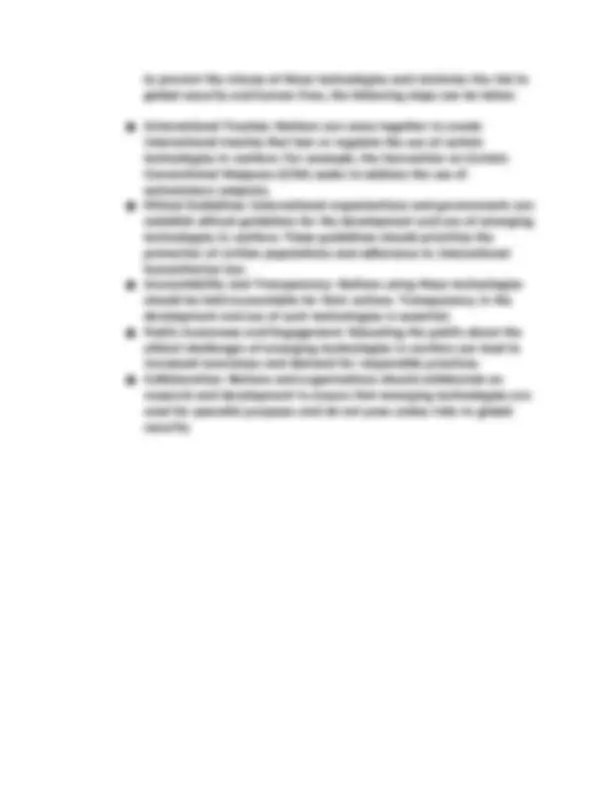


Study with the several resources on Docsity

Earn points by helping other students or get them with a premium plan


Prepare for your exams
Study with the several resources on Docsity

Earn points to download
Earn points by helping other students or get them with a premium plan
Community
Ask the community for help and clear up your study doubts
Discover the best universities in your country according to Docsity users
Free resources
Download our free guides on studying techniques, anxiety management strategies, and thesis advice from Docsity tutors
This document explains the key takeaways for the scientific, intellectual, and technological revolution
Typology: Lecture notes
1 / 10

This page cannot be seen from the preview
Don't miss anything!







Des Courtney Kate Y. Baguinat October 21, 2023 PSY1M1 GE MIDTERM EXAMINATION ANSWER ALL QUESTIONS INTELLECTUAL REVOLUTIONS
● Nicolaus Copernicus- proposed the heliocentric model, challenging the Earth-centered view of the universe. ● Charles Darwin- theory of evolution by natural selection revolutionized the understanding of the origin and diversity of species. ● Sigmund Freud- psychoanalysis introduced a new approach to understanding the human mind and behavior, emphasizing the role of the unconscious. ● Isaac Newton- laws of motion and universal gravitation provided a unified framework for understanding the physical world. ● Galileo Galilei- telescopic observations supported the heliocentric model and introduced the importance of empirical evidence. ● Johannes Kepler-laws of planetary motion improved the accuracy of astronomical predictions. These groundbreaking discoveries paved the way for a new understanding of the natural world by emphasizing empirical evidence, mathematical precision, and the use of the scientific method. They challenged traditional beliefs and contributed to the development of modern science and technology.
d. Privacy: Data privacy is crucial. AI systems should respect individuals' privacy rights and only collect and use data for the intended purpose. Users should have control over their data. e. Human Oversight: Autonomous systems should include mechanisms for human oversight and intervention. Humans should have the final say in critical decisions. f. Ethical Guidelines: The development and deployment of AI should follow ethical guidelines and principles that prioritize human welfare and safety.
to prevent the misuse of these technologies and minimize the risk to global security and human lives, the following steps can be taken: ● International Treaties: Nations can come together to create international treaties that ban or regulate the use of certain technologies in warfare. For example, the Convention on Certain Conventional Weapons (CCW) seeks to address the use of autonomous weapons. ● Ethical Guidelines: International organizations and governments can establish ethical guidelines for the development and use of emerging technologies in warfare. These guidelines should prioritize the protection of civilian populations and adherence to international humanitarian law. ● Accountability and Transparency: Nations using these technologies should be held accountable for their actions. Transparency in the development and use of such technologies is essential. ● Public Awareness and Engagement: Educating the public about the ethical challenges of emerging technologies in warfare can lead to increased awareness and demand for responsible practices. ● Collaboration: Nations and organizations should collaborate on research and development to ensure that emerging technologies are used for peaceful purposes and do not pose undue risks to global security.